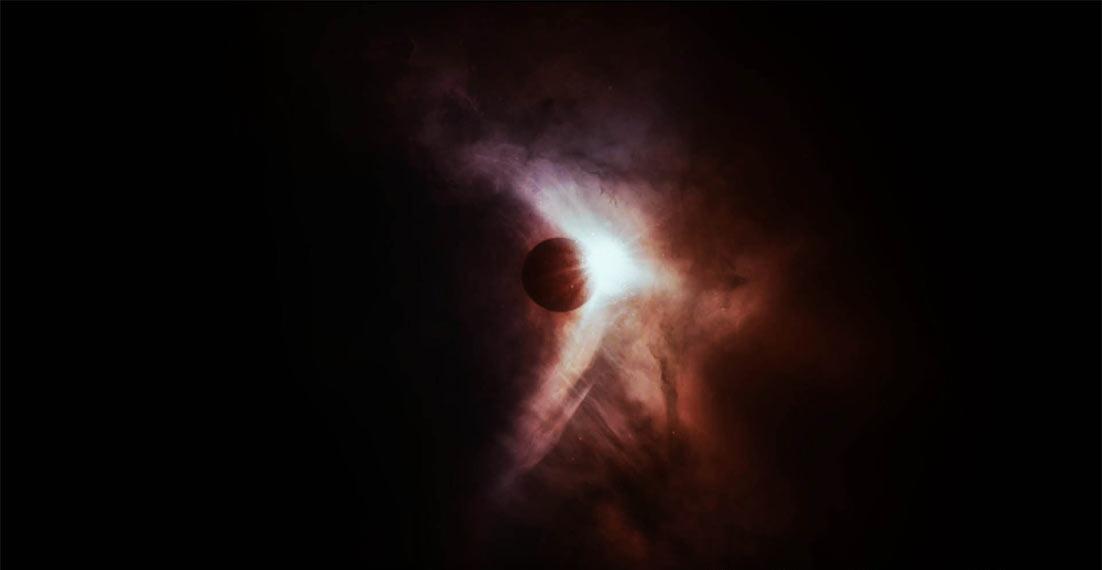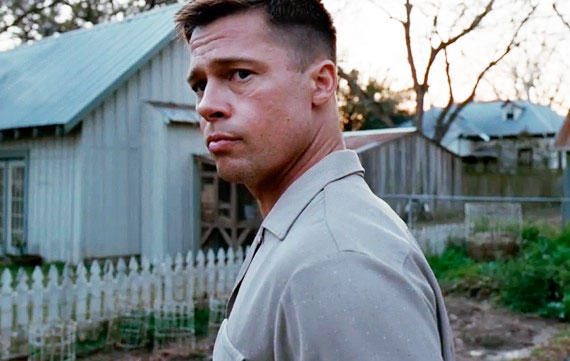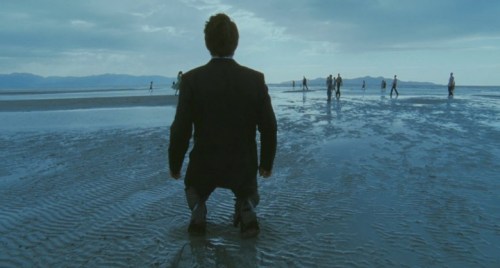
“Where were you when I laid the foundations of the earth … when the morning stars sang together and all the sons of God shouted for joy?” Job 38:4,7

In my second theatrical experience of Terrence Malick’s “The Tree of Life,” I was in awe of things that I had either overlooked in my first review or taken for granted. I am, in particular, spellbound by the first 40 minutes, so much to the degree that when this opening ends, I really wanted to watch it again from the start rather than proceed to the second part of the movie! There must be a dozen or so shots in each minute, and each one of them so visually breathtaking and spectacularly conceived that it sweeps the floor against most entire other movies’ best shot.
(Article contains spoilers.)
The brief prologue set in 1960’s Texas shows parents Brad Pitt and Jessica Chastain learning of one of their son’s death. We cut forward to modern times with Sean Penn as an architect having what looks like a midlife crisis in an urban industrial city. Then it flips to the beginning of the Earth’s history in how it came about by the common theory of the Big Bang. The torrential surge, the immensity, the assembly, the emergence of life by construct of atoms, has what I feel an even greater meticulousness than “2001: A Space Odyssey” in terms of how it streams and flows.

The beginning of life on Earth is something we have thought about from time to time for sure. Malick conceives some of cinema’s greatest images back to back. The amazement of life and how we got here and how we were created through the stages of evolution is an awesome film feat. To see cinema’s most realistic dinosaur on film is a surprise, and also a stunning visualization. Not before have I marveled by the idea of how miraculous it is that dinosaurs (or we) came to exist. When we see a person with cerebral palsy at a later time we don’t gawk at pity at his disease, for once, but actually observe how amazing and even awesome that a person even with his condition miraculously exists. If 100% of humans had cerebral palsy it would still be a miracle of life.
The finest intellectual juxtaposition and metaphor of the film has to first do with the dinosaurs. When Malick brings dinosaurs onto the screen I thought it would enact the archetypal characteristic of dinosaurs of depicting them as predators and eaters. In what I feel is an act of artistic genius, Malick shows one dinosaur not attacking a small animal for a meal but bullying for the sake of bullying. In an hour later, Pitt will bully his son at the dinner table for speaking with insolence.

The origins of life are illustrated and the film springs forward to the 1950’s starting with the birth of Pitt’s children. For ten, maybe fifteen minutes, Malick uses brusque and undulating editing techniques to capture all the basic early joys and discoveries of childhood. Pitt is first stern about one thing: Play, my children, but don’t cross your neighbor’s property lines. Did Earth at the beginning think about property lines? It’s moments like this that prompts me to personally consider that I could be a better person; I’m a humble film critic but I could do better to share my home and my things more readily. “The Tree of Life” makes me think harder of such things. I am as absorbed by the second half of the film as I was during the first half once again.
By the mid-section of the film I had nearly forgotten about some of its impressionistic touches. Mother floats in the air in spiritual transcendence. Her son Jack (Hunter McCracken) imagines that if she had a fateful passing he imagines a glass tomb to pedestal in a green forest for the rest of time. We observe plenty more moments of happiness and bliss – nobody is damned, nothing is lost for long stretches in the film when most filmmakers would have interrupted with dramatic crisis. “The Tree of Life” does eventually progress beyond life’s precious moments and a story “conflict” begins to undertow the film. It becomes noticeable that the boys love their mom more than their father.
 The father begins to lose his way in life. He imparts onto his boys that they must become aggressive to succeed in life, to hit their opponents when their pants are done. He has 27-odd science and engineering patents. He loses in court after a corporation has stolen one of his ideas. Following this failure, he takes his anger home with him and becomes scolding with them. His escalation in anger – conjunct with his professional failure – lends to rising abusive behavior towards his boys. The boys transition into ill feelings and shrinking respect for their father.
The father begins to lose his way in life. He imparts onto his boys that they must become aggressive to succeed in life, to hit their opponents when their pants are done. He has 27-odd science and engineering patents. He loses in court after a corporation has stolen one of his ideas. Following this failure, he takes his anger home with him and becomes scolding with them. His escalation in anger – conjunct with his professional failure – lends to rising abusive behavior towards his boys. The boys transition into ill feelings and shrinking respect for their father.
Then, the most integral scene of the movie: Father is working on an axle or gasket underneath his automobile while it is being raised by a flimsy looking car jack. We have an impression of his son and how he wishes the car would collapse onto his father bringing him to immediate death. It is uncertain, but perhaps he thinks for a moment of kicking that car jack to deliberately bring that about. But it is a  wish and it is a morbid wish. I think it is fair to say that children with disdain for their parents outgrow angry thoughts and eventually love and honor their parents again. Life re-balances itself, fathers and children reconcile, mothers promote posterity, love for family finds a new passage as time goes on.
wish and it is a morbid wish. I think it is fair to say that children with disdain for their parents outgrow angry thoughts and eventually love and honor their parents again. Life re-balances itself, fathers and children reconcile, mothers promote posterity, love for family finds a new passage as time goes on.
Malick concludes with a wet paradise that is an afterlife. Free from the restrictions of business, duty, debts, property lines and anything else that holds us back while we struggle here on Earth. This idea makes it more profound than most other movies that imagine commune in the afterlife. Malick brings back the impressionistic beauty that he demonstrated in much of the first 40 minutes of the film. I’m grateful that he didn’t hold back. What he has done on a whole is conveyed ideas and created images unlike anything else I’ve seen in cinema. This is the definition of a masterpiece.





